fixpage-rb-about.php
fixpage-rb-about.php
*Click a link below to jump to the section
Journal Information
The Journal of Robotics and Mechatronics (JRM), founded in 1989, is the world’s first journal devoted to this fields of robotics and mechatronics. Since its first issue, the JRM has published over 2,500 works exclusively in this field. Six times a year, we curate a diverse range of articles , essential to our journal’s global readership, all readily accessible online at no cost.
The journal title is abbreviated as "J. Robot. Mechatron.".
Aims and Scope
JRM is a peer-reviewed journal in fields such as robotics, mechatronics, automation, system integration and human-related technology. Its editorial board includes well-established researchers and engineers in the field from the world over.
The scope of the journal includes any and all topics on robotics and mechatronics. As a key technology in robotics and mechatronics, it includes actuator design, motion control, sensor design, sensor fusion, sensor networks, robot vision, audition, mechanism design, robot kinematics and dynamics, mobile robot, path planning, navigation, SLAM, robot hand, manipulator, nano/micro robot, humanoid, service and home robots, universal design, middleware, human-robot interaction, human interface, networked robotics, telerobotics, ubiquitous robot, learning, and intelligence.
The scope also includes, but is not limited to, applications of robotics and automation, and system integrations in the fields of manufacturing, construction, underwater, space, agriculture, sustainability, energy conservation, ecology, rescue, hazardous environments, safety and security, dependability, medical, and welfare.
Open Access  DOAJ indexed: https://doaj.org/toc/1883-8049
DOAJ indexed: https://doaj.org/toc/1883-8049
The Journal of Robotics and Mechatronics is fully Open Access under Creative Commons (CC) licenses. Authors are charged reasonable publication fees that offset the costs incurred in the peer review and publishing processes. All articles are published under the Creative Commons License CC BY-ND 4.0 (https://creativecommons.org/licenses/by-nd/4.0/) and free to access at the journal’s website.
Indexing and Abstracting
JRM is indexed and abstracted in the following databases.
- Emerging Sources Citation Index (ESCI)
- From 2015 Clarivate Analytics (former Intellectual Property and Science division of Thomson Reuters) has launched the Emerging Sources Citation Index (ESCI), which extends the universe of publications in Web of Science to include high-quality, peer-reviewed publications of regional importance and in emerging scientific fields. ESCI also makes content important to funders, key opinion leaders, and evaluators visible in Web of Science Core Collection even if it has not yet demonstrated citation impact on an international audience.
Journals in ESCI have passed an initial editorial evaluation and can continue to be considered for inclusion in products such as SCIE, SSCI, and AHCI, which have rigorous evaluation processes and selection criteria. All ESCI journals will be indexed according to the same data standards, including cover-to-cover indexing, cited reference indexing, subject category assignment, and indexing all authors and addresses.
Rapidly changing research fields and the rise of interdisciplinary scholarship calls for libraries to provide coverage of relevant titles in evolving disciplines. ESCI provides Web of Science Core Collection users with expanded options to discover relevant scholarly content. Get real-time insight into a journal’s citation performance while the content is considered for inclusion in other Web of Science collections. Items in ESCI are searchable, discoverable, and citable so you can measure the contribution of an article in specific disciplines and identify potential collaborators for expanded research. - Scopus
- The largest abstract and citation database of research literature and quality web sources covering nearly 20,500 titles from more than 5,000 publishers. If you have a portable username and password, you can log in above to access Scopus.
- Compendex (Ei)
- Compendex is one of the most comprehensive engineering literature databases available to engineers. With 15.8 million records across 190 engineering disciplines, Compendex delivers the comprehensive, precise information and insights that researchers need. Available on Engineering Village, users get results that are consistently accurate. Relevant. Up-to-date. And easy to find. Compendex indexes 1,031 journals that contain articles-in-press.
- DBLP
- DBLP is produced at the Computer Science department of the University of Trier.
This server provides bibliographic information on major computer science journals and proceedings. DBLP indexes more than 2.3 million articles and contains many links to home pages of computer scientists. - Ulrichsweb™ Global Serials Directory
- Ulrichsweb™ is the authoritative source of bibliographic and publisher information on more than 300,000 periodicals of all types–academic and scholarly journals, Open Access publications, peer-reviewed titles, popular magazines, newspapers, newsletters and more from around the world.
- Genamics JournalSeek
- Genamics JournalSeek is the largest completely categorized database of freely available journal information available on the internet. The database presently contains 100745 titles. Journal information includes the description (aims and scope), journal abbreviation, journal homepage link, subject category and ISSN. Searching this information allows the rapid identification of potential journals to publish your research in, as well as allow you to find new journals of interest to your field.
- Open J-Gate
- Open J-Gate is an electronic gateway to global journal literature in open access domain. Launched in 2006, Open J-Gate is the contribution of Informatics (India) Ltd to promote OAI. Open J-Gate provides seamless access to millions of journal articles available online. Open J-Gate is also a database of journal literature, indexed from 8948 open access journals, with links to full text at Publisher sites.
- J-Global
- J-Global is operated by Japan Science and Technology Agency (JST).
Accelerating Scientific Discovery and Development by Linking Information from Many Sources - NDL Search
- “NDL Search” is a new search service of National Diet Library. This service aims to be an access point from which you can use affluent knowledge from public libraries, archives, museums, institutes of academic research and NDL.
- CiNii Articles
- CiNii Articles is a database service which can search of information on academic articles published in academic society journals, university research bulletins or articles included in the National Diet Library's Japanese Periodicals Index Database and databases.
- CNKI
- China National Knowledge Infrastructure (CNKI) is the largest Chinese academic database that includes academic journals, newspapers, doctoral dissertations, proceedings of conference, etc.
- CAB Abstracts
- CAB Abstracts is the most comprehensive source of international research information in agriculture, environment and all related applied life sciences, produced by CABI Publishing. CAB Abstracts covers over 8,000 rigorously selected serials, books, and conference proceedings across the applied life sciences – from agriculture, the environment, and veterinary sciences, to applied economics, leisure/tourism, and nutrition
Editorial Board
| Editor in Chief | ||||
|---|---|---|---|---|
 |
||||
| OSUKA, Koichi Prof. Dr., Osaka Institute of Technology, Japan |
||||
| Deputy Editor in Chief | ||||
|---|---|---|---|---|
 |
||||
| NAMIKI, Akio Prof. Dr., Chiba University, Japan |
||||
| Editorial Member | ||||
|---|---|---|---|---|
 |
 |
 |
 |
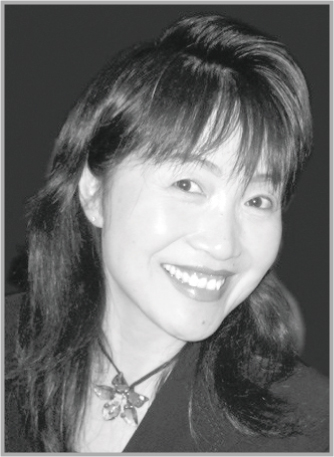 |
| ABIKO, Satoko Prof. Dr., Shibaura Institute of Technology, Japan |
ARATA, Jumpei Prof. Dr., Kyushu University, Japan |
BOCK, Thomas Prof. Dr., Technische Universität München, Germany |
CETINKUNT, Sabri Prof. Dr., University of Illinois at Chicago, U.S.A. |
FENG, Maria Q. Prof. Dr., Columbia University, U.S.A. |
 |
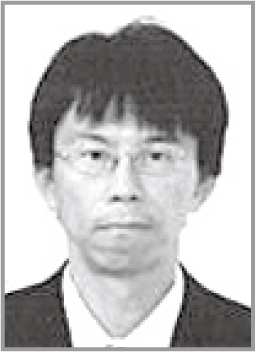 |
 |
 |
 |
| FUJISAWA, Shoichiro Prof. Dr., Tokushima Bunri University, Japan |
FUJITA, Toyomi Prof. Dr., Tohoku Institute of Technology, Japan |
HOJJAT, Yousef Prof. Dr., Tarbiat Modares University, Iran |
KANAMORI, Chisato Prof. Dr., The University of Electro-Communications, Japan |
KAWAMURA, Takashi Prof. Dr., Shinshu University, Japan |
 |
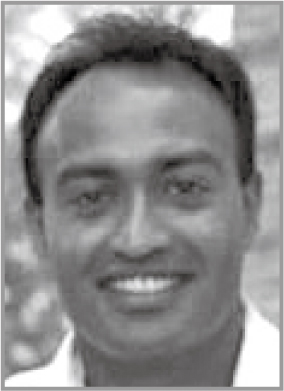 |
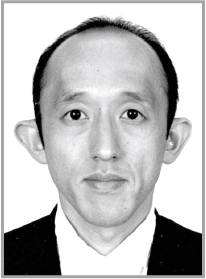 |
 |
 |
| MINAMI, Yuki Prof. Dr., University of Hyogo, Japan |
NANAYAKKARA, Thrishantha Reader Dr., Imperial College London, UK |
OHTAKE, Hiroshi Assoc. Prof. Dr., Kyushu Institute of Technology, Japan |
PAIK, Jamie Assoc. Prof. Dr., Ecole Polytechnique Federale de Lausanne, Switzerland |
SATO, Hirotaka Prof. Dr., Nanyang Technological University, Singapore |
 |
 |
 |
 |
 |
| SENOO, Taku Assoc. Prof. Dr., Hokkaido University, Japan |
SUZUKI, Satoshi Assoc. Prof. Dr., Chiba University, Japan |
TAKAIWA, Masahiro Prof. Dr., Tokushima University, Japan |
TAKESUE, Naoyuki Prof. Dr., Tokyo Metropolitan University, Japan |
TANAKA, Eiichiro Prof. Dr., Waseda University, Japan |
 |
 |
 |
 |
 |
| VENTURE, Gentiane Prof. Dr., The University of Tokyo, Japan Joint Appointed Fellow, National Institute of Advanced Industrial Science and Technology |
WANG, Pei-Jen Prof. Dr., National Tsing Hua University, Taiwan |
WATANABE, Keigo Prof. Dr., Okayama Univ., Japan |
YAMANISHI, Yoko Prof. Dr., Kyushu University, Japan |
YASHIMA, Masahito Prof. Dr., National Defense Academy of Japan, Japan |
| Adviser | ||||
|---|---|---|---|---|
 |
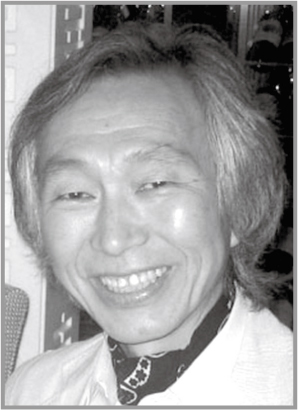 |
|||
| IDESAWA, Masanori Prof. Emeritus, Dr., The University of Electro-Communications, Japan |
YUTA, Shin’ichi Prof. Emeritus, Dr., University of Tsukuba, Japan |
|||
| Former Editors in Chief | ||||
|---|---|---|---|---|
 |
 |
 |
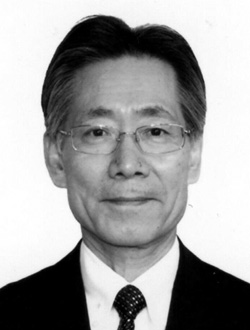 |
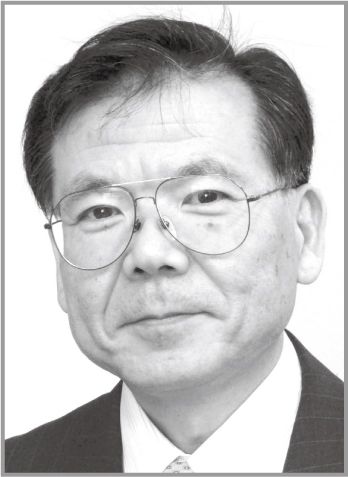 |
| YAMAFUJI, Kazuo Prof. Emeritus, Dr., The University of Electro-Communications, Japan |
FUKUDA, Toshio Prof. Dr., Meijo University, Japan |
KANEKO, Makoto Prof. Dr., Meijo University, Japan |
ARAI, Tatsuo Prof. Dr., Beijing Institute of Technology, China |
TAKITA, Yoshihiro Prof. Emeritus, Dr., National Defence Academy of Japan, Japan |
*Unauthorized use of photos is prohibited.
JOURNAL & ETHICS POLICIES
- Authorship
- The corresponding author warrants that all authors have seen and approved the author list and order. Changes to the author list after manuscript submission – such as the insertion or removal of author names, or a rearrangement of author order – must be approved by all authors and the relevant Associate Editor or Editor-in-Chief. Authors are encouraged to consider the Council of Science Editors (CSE) principles governing authorship. According to the CSE guidelines, authors have made substantial contributions to the work; have agreed to be held accountable for their own contributions to the work; can identify which co-authors are responsible for other parts of the work; have confidence in the integrity of the work; and have reviewed and approved the final manuscript. Contributors who do not qualify for authorship may be included in the Acknowledgements section instead.
- Duplicate submission
- Authors warrant that their submitted manuscript has not been previously published (in part or in whole, in any language), is not in press, and has not been simultaneously submitted for publication elsewhere. Authors must inform the editors if any related manuscripts are under consideration, in press, posted to a preprint server, or published elsewhere. The availability of a manuscript on a publicly accessible preprint server does not constitute prior publication (see ‘Preprints’), but authors should indicate upon submission any posting to a preprint server. If authors choose to submit their manuscript elsewhere before a final decision has been made on its suitability for publication in the Journal of Robotics and Mechatronics, they must first withdraw it from the journal.
- Originality
- Authors warrant that their submission to the journal is their original work. The journal uses the iThenticate system via Crossref’s Crosscheck service to screen manuscripts for unoriginal content. By submitting a manuscript to the journal, authors agree to this screening. Any manuscript with an unacceptable level of unoriginal material may be rejected or retracted at the editors’ discretion.
- Preprints
- The Journal of Robotics and Mechatronics supports the wide dissemination of research and therefore encourages authors to post their research manuscripts on reputable preprint servers, either before or at the same time as submission to the journal. This policy applies only to the original version of a manuscript that describes primary research; other article types are not included. Versions of manuscripts that have been revised in response to reviewers’ comments, accepted for publication or published in the journal should not be posted on a preprint server. Rather, links via the DOI to the published manuscript on the journal’s website should be posted at the relevant pages of the preprint server.
- Scooping
- Editors’ assessment of a submitted manuscript’s novelty will not be influenced by other manuscripts posted to preprint servers after the date of submission to the Journal of Robotics and Mechatronics. In addition, if you submit your manuscript to the journal within 3 months of posting it to a preprint server, the Editors will consider your manuscript for publication.
- Data falsification, data fabrication and image integrity
- Authors must not falsify or fabricate data. Authors may digitally manipulate or process images, but only if the adjustments are kept to a minimum, are applied to the entire image, meet community standards, and are clearly described in the manuscript. All images in a manuscript must accurately reflect the original data on which they are based. Authors must not move, remove, add or enhance individual parts of an image. The editors reserve the right to request original, unprocessed images from the authors. If authors fail to provide images on request, the editors may reject or retract the manuscript.
- Reproducing copyrighted material
- If a manuscript includes material that is not the authors’ copyright, the authors must obtain written permission from the copyright holder(s) to reproduce it. If a manuscript includes previously published material, such as figures or large amounts of text, the authors must obtain written permission from the copyright holder(s) and the publisher of the original work to reproduce it. The authors must always fully cite the original work in their manuscript. Copies of all reproduction permissions must be included with the manuscript when it is first submitted to the journal.
- Availability of data and materials
- Authors must disclose the source of publicly available data and materials, such as public repositories or commercial manufacturers, by including accession numbers or company details in their manuscript, as appropriate. Authors may make their own data and materials available by linking from their manuscript to relevant community-recognized public databases or digital repositories. All data sets must be made available in full to the editors and reviewers during the peer review process, and must be made publicly available by the date of publication. Authors commit to preserving their data sets for at least three years from the date of publication in the journal. The journal encourages authors to grant reasonable requests from colleagues to share any data, materials and experimental protocols described in their manuscript.
- Animal/human experimentation
- Authors of manuscripts describing experiments involving humans or materials derived from humans must demonstrate that the work was carried out in accordance with the principles embodied in the Declaration of Helsinki, its revisions, and any guidelines approved by the authors’ institutions. Where relevant, the authors must include a statement in their manuscript that describes the procedures for obtaining informed consent from participants regarding participation in the research and publication of the research. Authors of manuscripts describing experiments involving animals or materials derived from animals must demonstrate that the work was carried out in accordance with the guidelines approved by the authors’ institution(s).
- Military-related research
- Following Science Council of Japan (SCJ) policy, the Journal of Robotics and Mechatronics will not, in principle, publish papers of military-related research.
- Specimen collection
- Manuscripts describing the collection of archaeological, geological, paleontological or wildlife specimens or samples should include detailed information on their provenance and collection methods. Authors must include a statement in their manuscript describing the relevant ethics guidelines, local laws and collection permits under which the research was conducted.
- Conflicts of interest
- In the interests of transparency, the journal requires all authors to declare any conflicts of interest in relation to their submitted manuscript. A conflict of interest exists when there are actual, perceived or potential circumstances that could influence an author’s ability to conduct or report research impartially. Potential conflicts include (but are not limited to) competing commercial or financial interests, commercial affiliations, consulting roles, or ownership of stock or equity. Authors should list all funding sources for their work in the Acknowledgements section of their manuscript.
- Manuscript confidentiality
- The journal keeps the details and communications surrounding unpublished manuscripts confidential.
- Long-term archiving of journal content
- The Journal of Robotics and Mechatronics has a robust, long-term archive strategy. Content is hosted on the publisher’s website; J-STAGE; deposited to the Japanese National Diet Library; and secured in a ‘dark’ archive with Portico.
PEER REVIEW PROCESS
- Editorial and peer review process
- The journal uses single-blind peer review. All original research manuscripts are sent generally to two anonymous reviewers who evaluate them for originality, validity, novelty, methodology, appropriate citation of relevant work, and the importance of content and conclusions. Further details about the journal’s acceptance criteria are listed below. The time required for peer review depends on many factors, including the time to locate reviewers and the timeliness of their responses. When a manuscript is submitted to the journal, the Editor-in-Chief performs initial screening. Manuscripts that do not fit the journal’s scope or are not deemed suitable for publication are rejected without review. The remaining manuscripts are assigned to an Associate Editor who assigns two reviewers to assess each manuscript. The Editor-in-Chief may manage the peer review process in some circumstances. The deadline for submission of the reviewers’ reports varies by article type. Once the reviewers’ reports have been received, the Associate Editor makes the first decision: acceptance; conditional acceptance with minor revisions; revision and resubmission due to the need for major revisions; or reject. Decisions are made on the totality of the information available to the Associate Editor: the manuscript, the reviewers’ reports, the acceptance criteria, the competition for limited space in the journal, and the aims and ambitions of the journal.
- Reviewer selection
- Reviewers are selected without regard to geography and need not belong to the Journal of Robotics and Mechatronics’s Editorial Committee. Reviewers are selected based on their expertise in the field, reputation, recommendation by others, and/or previous experience as peer reviewers for the journal.
- Editorial independence
- As publisher of the journal, Fuji Technology Press Ltd. has granted the Editorial Board complete and sole responsibility for all editorial decisions. The publisher will not become involved in editorial decisions, except in cases of a fundamental breakdown of process. Editorial decisions are based only on a manuscript’s scientific merit and are kept completely separate from the journal’s other interests. The authors’ ability to pay any publication charges has no bearing on whether a manuscript is accepted for publication in the journal.
- Appeals
- Authors who believe that an editorial decision has been made in error may lodge an appeal with the Editorial Office. Appeals are only considered if the authors provide detailed evidence of a misunderstanding or mistake by a reviewer or editor. Appeals are considered carefully by the Editorial Board, whose decision is final.
- Confidentiality in peer review
- The journal maintains the confidentiality of all unpublished manuscripts. Editors and/or
reviewers:
- • will not disclose a reviewer’s identity unless the reviewer makes a reasonable request for such disclosure
- • will not discuss the manuscript or its contents with anyone not directly involved with the manuscript or its peer review
- • will not use any data or information from the manuscript in their own work or publications
- • will not use information obtained from the peer review process to provide an advantage to themselves or anyone else, or to disadvantage any individual or organization
- • ensure that any third-party reviewers who gain access to the manuscript maintain the conditions above.
- Conflicts of interest in peer review
- A conflict of interest exists when there are actual, perceived or potential circumstances that could influence a reviewer’s or editor’s ability to act impartially when assessing a manuscript. Such circumstances might include having a personal or professional relationship with an author, working on the same topic or in direct competition with an author, or having a financial stake in the work or its publication. Members of the journal’s Editorial Board undertake to declare any conflicts of interest when handling manuscripts. An editor who declares a conflict of interest is unassigned from the manuscript in question and is replaced by a new editor. Reviewers who believe they may have a conflict of interest are requested to contact the Editorial Office as soon as possible, so that the Associate Editor may find a replacement reviewer without delay.
- Responding to potential ethical breaches
- The journal will respond to allegations of ethical breaches by following its own policies and, where possible, the appropriate guidelines of the Committee on Publication Ethics.
Contact
- JRM Editorial Office <Contact Form>
- email:

- Address: Fuji Technology Press Ltd.
- 1-15-7, Uchikanda, Chiyoda-ku, Tokyo 101-0047, Japan
Ichigo Otemachi North Bldg. 2F